Filipino tribal tattoos have a deep-rooted significance within the indigenous communities of the Philippines. These intricate and symbolic designs reflect the cultural heritage, beliefs, and values of various tribes inhabiting the archipelago. In this comprehensive guide, we will delve into the captivating world of Filipino tribal tattooing and unravel the meanings behind these ancient art forms.
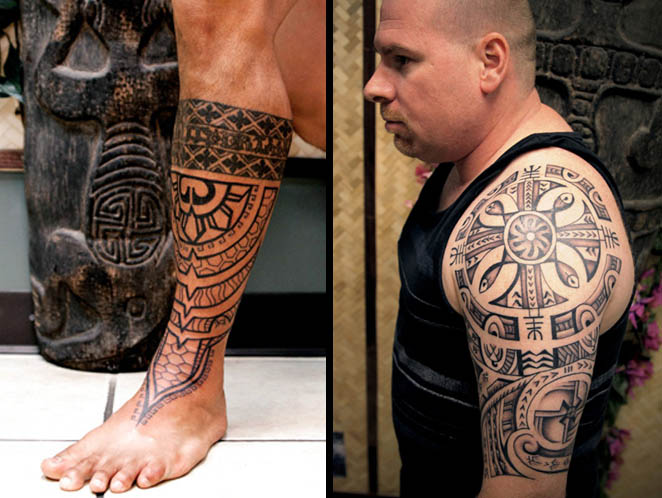
The Origins of Filipino Tribal Tattoos
The origins of Filipino tribal tattoos can be traced back centuries ago when the indigenous people of the Philippines adorned their bodies with inked markings. These tattoos were more than mere decorative expressions; they held profound spiritual and cultural significance. Each design was carefully chosen to represent the individual’s social status, achievements, personal beliefs, and tribal affiliations.
The traditional process of Filipino tribal tattooing involved using natural pigments extracted from plants, such as charcoal or burnt rice husks, mixed with water or coconut oil. The ink was then applied to the skin using various tools, including thorns, bamboo sticks, and other sharp implements.
The Deep Symbolism of Filipino Tribal Tattoos
Filipino tribal tattoos encapsulate a wide array of symbols and motifs, each carrying its own unique meaning. Let’s dive into some of the most significant symbols commonly found in these captivating designs:
The Sun: A Symbol of Life and Vitality
In Filipino tribal culture, the sun is a highly significant element with deep-rooted symbolism. It holds immense importance as it represents life, light, and vitality within the cultural and spiritual framework of various indigenous tribes in the Philippines. The sun’s depiction in tribal tattoo designs serves as a constant reminder and homage to the life-giving energy that sustains all living beings.

The sun, known as “araw” in Filipino, is considered a powerful entity embodying both physical and spiritual aspects. It illuminates the world, providing warmth, light, and nourishment, which are essential for growth and survival. In tribal communities, where a strong connection with nature prevails, the sun is revered as a divine force responsible for sustaining life on Earth.
Tribal tattoos have long been a significant part of Filipino culture, serving as visual representations of an individual’s identity, beliefs, and ancestral connections. Within these tattoos, the sun is often portrayed as a radiant and powerful symbol, reflecting its vital role in the lives of tribal members. The design of the sun may vary across different tribes, but it commonly features bold and intricate patterns, showcasing the artistic skills and creativity of the indigenous people.
The sun’s prominent presence in tribal tattoo designs signifies its association with strength, power, and protection. It is believed to possess the ability to ward off evil spirits, ensuring the well-being and prosperity of the wearer. Additionally, the sun represents enlightenment, knowledge, and wisdom, guiding individuals on their life journeys and inspiring them to seek personal growth and self-discovery.
Moreover, the sun’s symbolism extends beyond its physical attributes. It carries profound spiritual connotations, embodying the interconnectedness of all living beings and their dependence on the natural world. The sun’s life-giving energy is seen as a unifying force that binds humanity with nature, emphasizing the importance of harmony and balance in tribal communities.
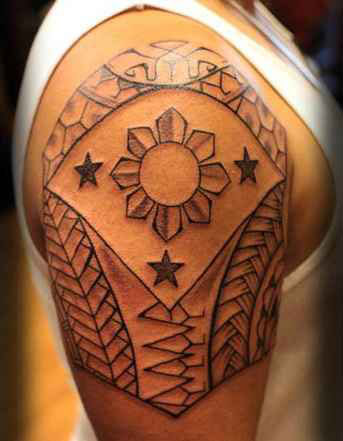
Filipino tribal tattoos serve not only as adornments but also as a means of preserving cultural heritage and ancestral traditions. They are deeply rooted in the collective memory of indigenous tribes, representing their history, values, and worldview. Through these intricate designs, tribal members honor their ancestors, express their cultural identity, and strengthen their sense of belonging within their communities.
The Spirals: Symbolizing Continuity and Harmony
In Filipino tribal tattoos, spiral patterns hold significant cultural and symbolic meanings. These intricate designs are not merely decorative but are deeply rooted in the beliefs and values of the indigenous tribes of the Philippines. The spiral motif is considered highly sacred and is believed to embody the essence of continuity, harmony, and balance within oneself and the surrounding environment.
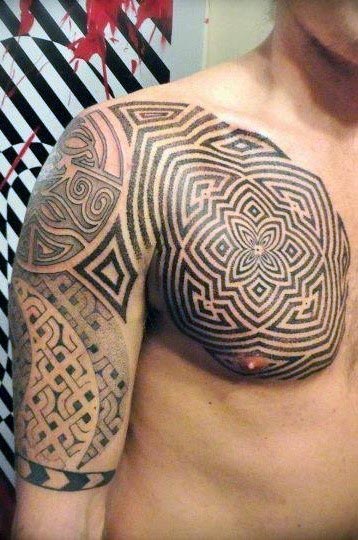
The spiral pattern found in Filipino tribal tattoos is visually captivating, with elegant and mesmerizing curves that draw the eye. These spirals can be seen in various forms, such as single or double spirals, intertwined spirals, or spirals combined with other elements like animals, plants, or geometric shapes. Each design carries its own unique symbolism, but they all share a common representation of the cycle of life, growth, and interconnectedness.
The spiral symbolizes continuity, representing the idea that life is an unending journey. It signifies the perpetual cycle of birth, growth, death, and rebirth that is part of the natural order of existence. This cyclic nature reflects the belief that life is not linear but rather a continuous process of transformation and renewal. The spiral reminds individuals that they are part of this greater cycle, encouraging them to embrace change and view it as an opportunity for personal growth.
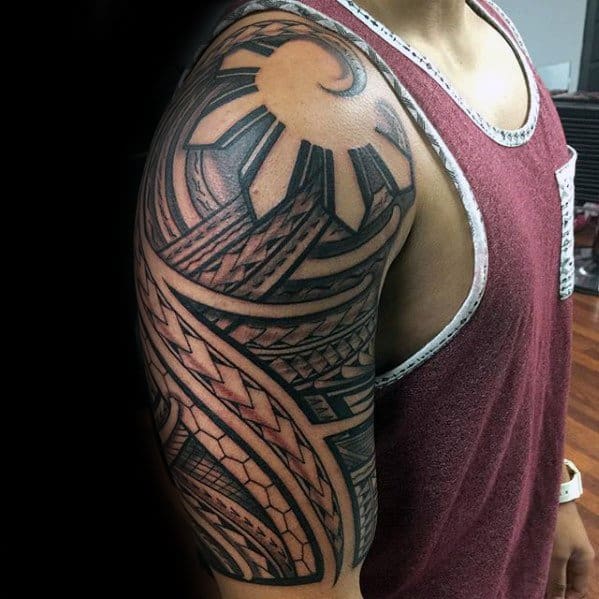
Harmony is another significant aspect associated with spiral patterns in Filipino tribal tattoos. The balanced and symmetrical nature of these designs conveys a sense of equilibrium and unity. The spirals symbolize the interconnectedness between oneself and the surrounding environment, highlighting the belief that humans are deeply connected to nature and other living beings. This interconnectedness emphasizes the importance of maintaining a harmonious relationship with both the inner self and the external world.
Furthermore, the spiral patterns in Filipino tribal tattoos also serve as a visual representation of the interconnectedness between generations. They signify the bond between ancestors, present generations, and future descendants. The spiral embodies the wisdom passed down through generations, acknowledging the collective knowledge, experiences, and values that shape individuals and communities.
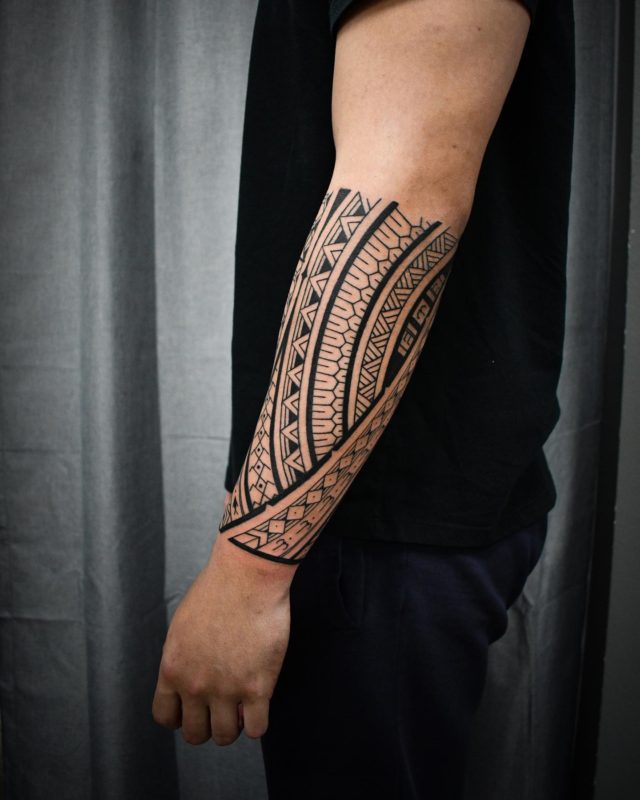
These tribal tattoos hold cultural significance beyond their aesthetic appeal. They serve as a reminder of the rich heritage, beliefs, and values of the Filipino tribes. The spiral patterns within these tattoos encapsulate the essence of continuity, harmony, and interconnectedness, offering a profound reflection on the cyclical nature of life and the importance of maintaining balance within oneself and with the world.
The Tribesman/Warrior: Bravery and Strength
Tribal tattoos depicting warriors or tribesmen hold significant meaning and symbolism. These designs are deeply rooted in the history and traditions of various indigenous cultures and pay tribute to the bravery, strength, and honor displayed by ancestral warriors.
Warriors in tribal societies played a vital role in protecting their communities from external threats and maintaining internal order. They were revered for their courage on the battlefield and their unwavering commitment to defending their land and people. Tribal tattoos featuring warriors embody these qualities and serve as a visual representation of the warrior spirit.
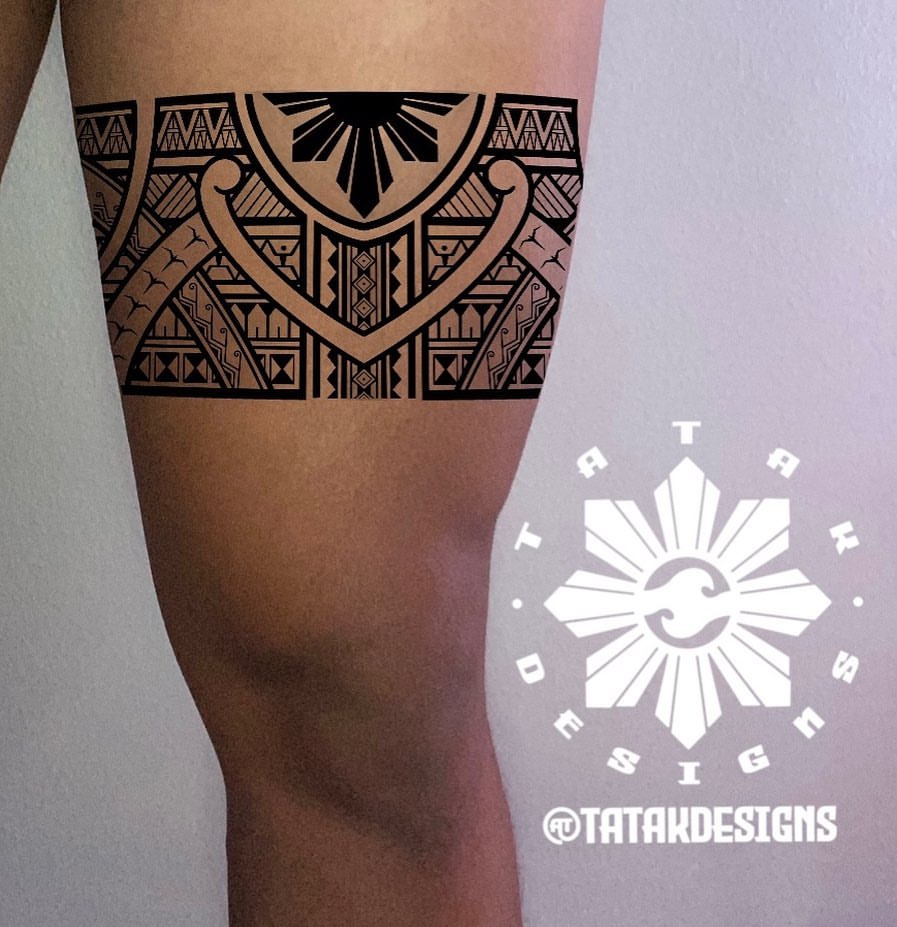
These tattoos often depict warriors adorned in traditional attire, wielding weapons, and displaying symbols of power and authority. The designs may incorporate intricate patterns, geometric shapes, and bold lines, which reflect the artistic style prevalent in many indigenous cultures. Different elements within the tattoo design can carry specific meanings related to bravery, such as shields representing protection or arrows symbolizing strength and agility.
Furthermore, tribal tattoos portraying warriors also emphasize the importance of heritage and cultural identity. Tribal societies have rich histories and unique cultural practices that are passed down through generations. By immortalizing ancestral warriors through body art, individuals express their connection to their roots and demonstrate respect for their cultural heritage. These tattoos serve as a reminder of the sacrifices made by those who came before, preserving traditions and ensuring their legacy endures.
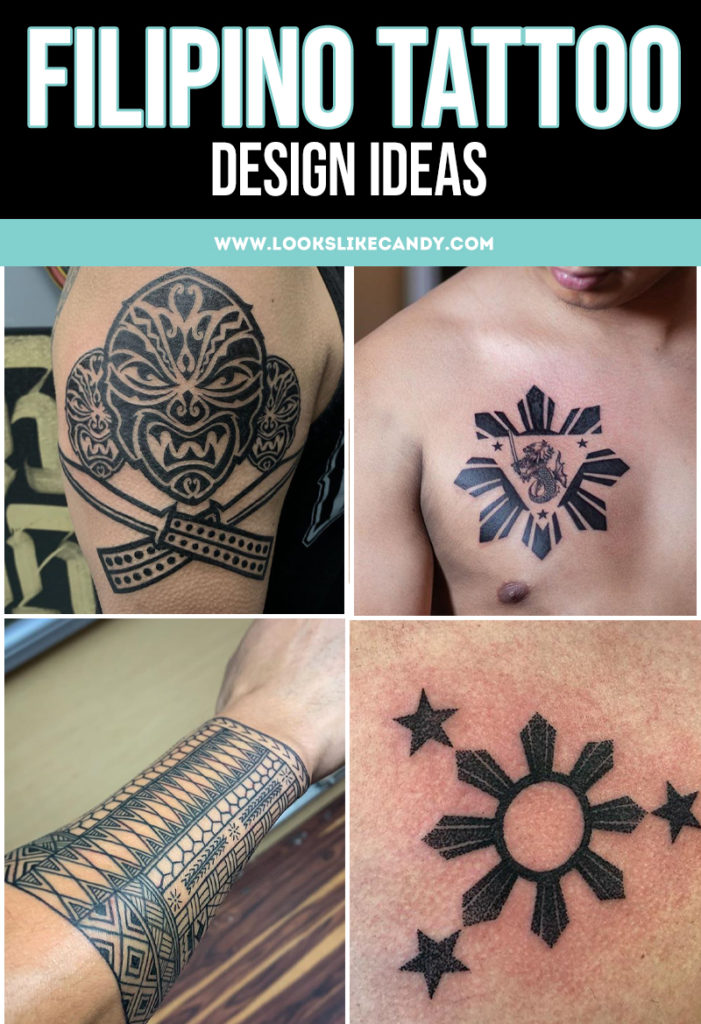
In addition to personal significance, these tattoos can foster a sense of belonging and camaraderie among tribal communities. They act as visual markers of shared values, uniting individuals who identify with the same cultural background or tribal affiliation. Tribal members who bear these tattoos not only honor their own lineage but also show solidarity with their community, reinforcing bonds and fostering a collective sense of pride.
It is essential to approach tribal tattoos with respect and cultural sensitivity. While they can be appreciated for their aesthetic appeal and symbolic value, it is crucial to recognize the historical and cultural contexts behind them. Understanding the significance of these tattoos helps to avoid appropriation and ensures that the true essence of tribal art is respected.
The Animals: Guardians and Spirit Guides
Filipino tribal tattoos have a rich history and cultural significance. They are deeply rooted in the indigenous traditions of the Philippines, where they serve as a means of storytelling, identity, and spiritual connection. Animal motifs play a prominent role in these tattoos, as they symbolize various qualities and characteristics that hold significant meaning within Filipino tribal culture.
One commonly featured animal motif in Filipino tribal tattoos is the eagle. The eagle is revered for its association with freedom and power. It represents strength, courage, and independence. In Filipino tribal belief systems, the eagle is often seen as a powerful spirit ally that can guide and protect individuals on their life journeys. By incorporating the image of an eagle into their tattoos, people express their desire for personal empowerment and their connection to nature’s majestic forces.
Another animal frequently depicted in Filipino tribal tattoos is the snake. Snakes hold a symbolic importance in many cultures worldwide, and in the context of Filipino tribal tattoos, they represent wisdom and transformation. The snake is associated with knowledge, healing, and rebirth. It signifies the ability to shed old skin and embrace growth and change. In Filipino tribal belief systems, snakes are believed to possess a profound understanding of the natural world and are seen as guardians of sacred knowledge. Including a snake motif in a tattoo serves as a reminder to seek wisdom, adapt to new situations, and embrace personal transformation.
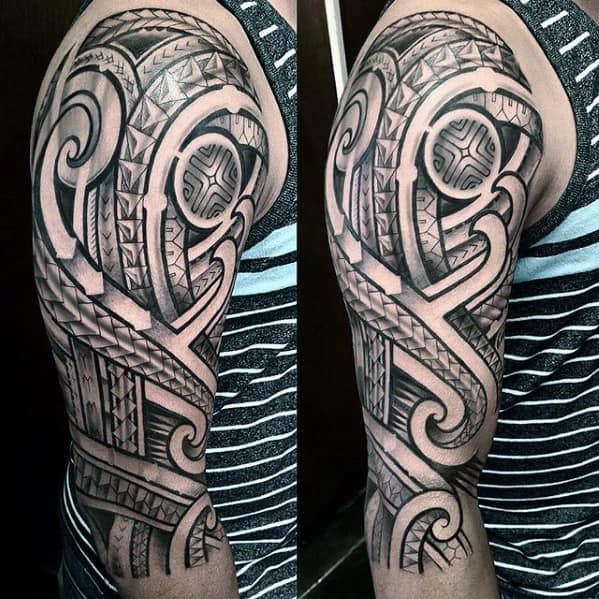
Additionally, several other animals such as the crocodile, shark, or turtle are revered as guardians and spirit guides within Filipino tribal culture. These animals embody qualities that are highly respected and sought after. The crocodile symbolizes strength, endurance, and protection. It is believed to bring good fortune and safeguard against harm. Similarly, sharks are seen as powerful guardians that provide guidance and offer protection from danger. The turtle, known for its longevity and wisdom, represents stability, patience, and resilience. It is considered a wise counselor and a symbol of good luck.
By incorporating these animal motifs into their tribal tattoos, individuals draw upon the spiritual qualities and characteristics associated with each animal. The tattoos serve as visual representations of personal values, aspirations, and connections to ancestral wisdom. They also honor the natural world and its diverse creatures while preserving and celebrating Filipino cultural heritage.
The Ancestors: Reverence and Protection
Filipino tribal tattoo designs hold significant cultural and spiritual meaning as they pay homage to ancestors, establishing a powerful connection between past, present, and future generations. These tattoos are adorned with intricate patterns that reflect a profound reverence for the wisdom, guidance, and protection offered by one’s forefathers.
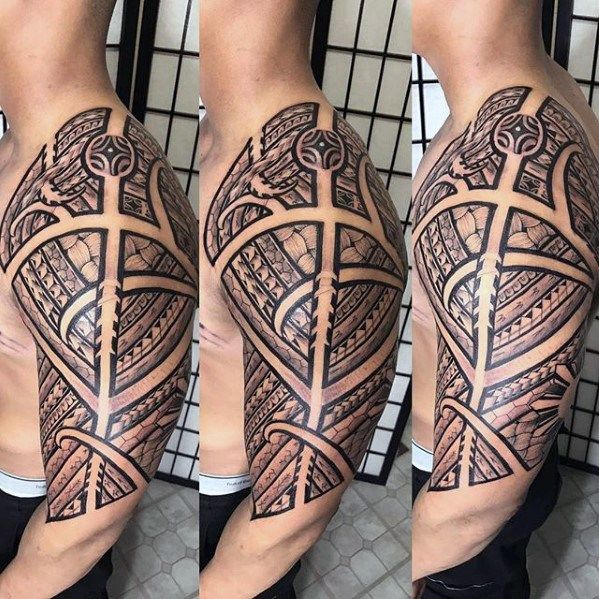
In Filipino culture, ancestors hold a revered position as pillars of wisdom, symbolizing the roots from which the community has grown. Tribal tattoos act as a physical manifestation of this connection, serving as a reminder of the ancestral heritage that shapes an individual’s identity. By bearing these designs on their bodies, individuals honor their lineage and acknowledge the invaluable contributions made by their ancestors.
The complexity of Filipino tribal tattoo designs often mirrors the rich tapestry of stories and traditions passed down through generations. Each pattern carries a unique symbolism, narrating tales of bravery, resilience, and cultural heritage. These tattoos may depict traditional motifs, such as animals, plants, or symbols related to spirituality and nature, all of which carry deep cultural significance.

Beyond representing a visual tribute, these tattoos also serve as a source of guidance and protection. It is believed that the inked symbols possess a spiritual power that connects the wearer to their ancestors, providing them with strength, wisdom, and a sense of direction. Individuals who bear these tattoos often feel a profound connection to their roots and draw inspiration from the values and teachings of their forefathers.
Moreover, Filipino tribal tattoos foster a sense of continuity and legacy. They bridge the gap between the past, present, and future, creating a timeless bond that transcends generations. In this way, these tattoos become a tangible link that ensures the preservation of cultural heritage and ensures that the wisdom of ancestors continues to resonate in contemporary society.
Conclusion
Filipino tribal tattoos serve as a window into the rich cultural tapestry of the Philippines. These intricate designs hold deep symbolic meanings, connecting individuals to their ancestral roots and spiritual beliefs. As we explore the world of Filipino tribal tattooing, it is crucial to approach this art form with respect, understanding, and appreciation for its cultural significance. Let these awe-inspiring tattoos carry forward the stories and traditions of the indigenous communities for generations to come.

I am Harvey Berry, a tattoo enthusiast who has immersed himself in the diverse world of ink, passionately exploring the beauty and artistry within each tattoo. My mission extends beyond uncovering the aesthetics of tattooing; it involves sharing in-depth knowledge across all aspects of this art form.
Fueled by genuine curiosity and love for every facet of tattooing, I have diligently crafted well-researched articles, with a special focus on the Tattoo Meaning of Impeccable Nest section. Here, my aim is to help the tattoo community gain a deeper understanding of the meanings and values embedded in each tattoo.
One of my primary goals is to encourage responsible decision-making when it comes to getting inked. I recognize that choosing to get a tattoo is a significant personal decision that requires careful consideration. Hence, I provide diverse resources covering the meaning of tattoos, the tattooing process, aftercare tips, and other valuable information.
Whether you are a seasoned tattoo enthusiast or embarking on your first exploration of the world of body art, I aspire to be a reliable resource for you at every step of your journey. I hope that my extensive knowledge of tattoos, especially in the Tattoo Meaning section, will assist you in finding inspiration to express yourself through the art of tattoos.
